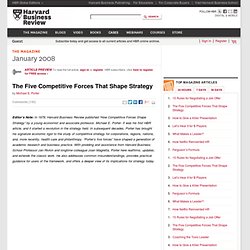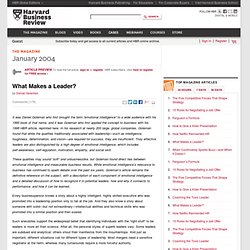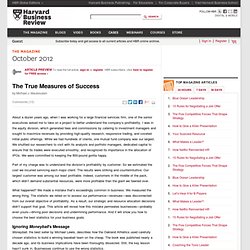

The Five Competitive Forces That Shape Strategy. Editor’s Note: In 1979, Harvard Business Review published “How Competitive Forces Shape Strategy” by a young economist and associate professor, Michael E.

Porter. It was his first HBR article, and it started a revolution in the strategy field. In subsequent decades, Porter has brought his signature economic rigor to the study of competitive strategy for corporations, regions, nations, and, more recently, health care and philanthropy. “Porter’s five forces” have shaped a generation of academic research and business practice. With prodding and assistance from Harvard Business School Professor Jan Rivkin and longtime colleague Joan Magretta, Porter here reaffirms, updates, and extends the classic work. What Makes a Leader?
It was Daniel Goleman who first brought the term “emotional intelligence” to a wide audience with his 1995 book of that name, and it was Goleman who first applied the concept to business with his 1998 HBR article, reprinted here.

In his research at nearly 200 large, global companies, Goleman found that while the qualities traditionally associated with leadership—such as intelligence, toughness, determination, and vision—are required for success, they are insufficient. Truly effective leaders are also distinguished by a high degree of emotional intelligence, which includes self-awareness, self-regulation, motivation, empathy, and social skill. These qualities may sound “soft” and unbusinesslike, but Goleman found direct ties between emotional intelligence and measurable business results. The True Measures of Success. About a dozen years ago, when I was working for a large financial services firm, one of the senior executives asked me to take on a project to better understand the company’s profitability.

I was in the equity division, which generated fees and commissions by catering to investment managers and sought to maximize revenues by providing high-quality research, responsive trading, and coveted initial public offerings. While we had hundreds of clients, one mutual fund company was our largest. We shuttled our researchers to visit with its analysts and portfolio managers, dedicated capital to ensure that its trades were executed smoothly, and recognized its importance in the allocation of IPOs. We were committed to keeping the 800-pound gorilla happy. Part of my charge was to understand the division’s profitability by customer.